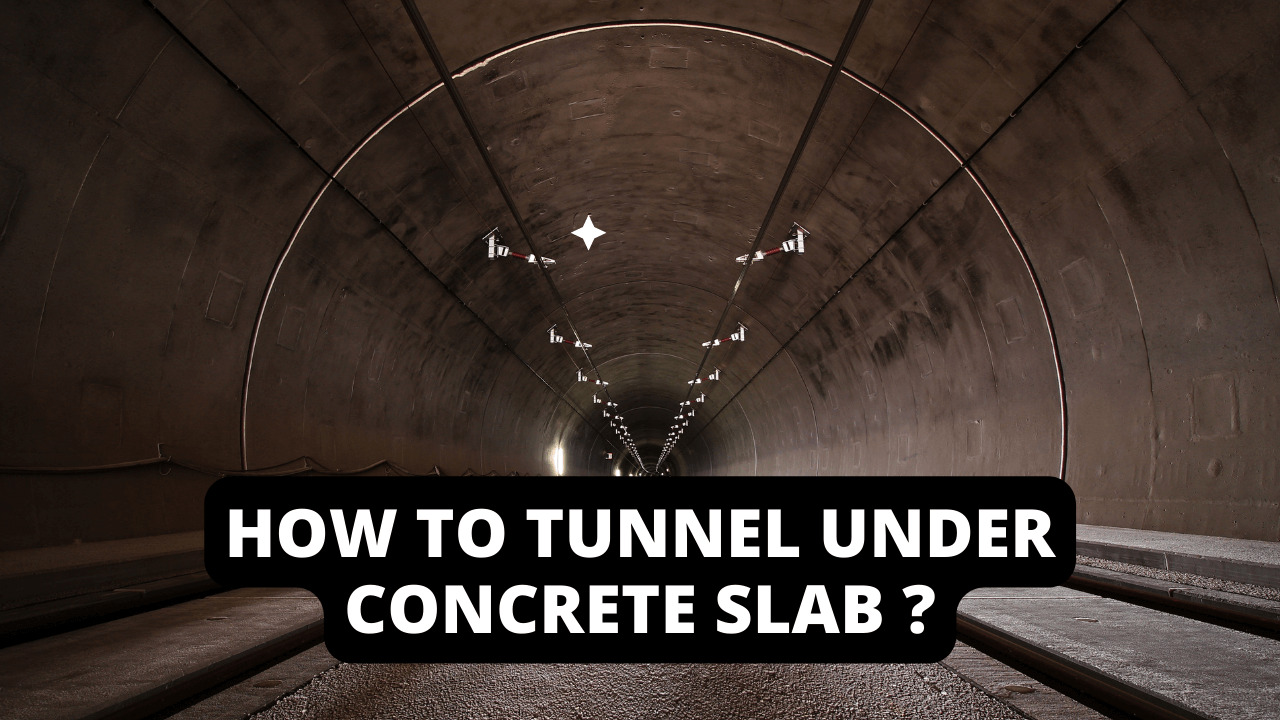You’ve recently learned that there’s a leak in or beneath your slab foundation that needs to be fixed. Perhaps your mind wanders to jackhammer images. Or perhaps you have no idea what to expect, other than the fact that it sounds unpleasant. Consider the havoc that a jackhammer would wreak on your home’s floor.
That room devolves into a catastrophe zone, and you’re left with a large mess to clean up. It’s also in the kitchen, which you won’t be able to use for quite some time.
You may be given the option of tunneling when getting estimates for sewer line repair. This is the act of excavating a tunnel beneath a residential or business structure and then crawling into the limited space beneath the structure to remove existing pipes and hang new ones from the slab.
Table of Contents
Tunnelling Under Slab: An Overview
Although it appears to be difficult, it is quite simple. A crew would drill beneath your home’s concrete slab foundation to reach a point where plumbing repairs are required. They utilize specialized shovels and much dirty work to dig an exact 3*3-foot square tunnel under your home.
Experts and foundation repair specialists will work together to devise a strategy that gets you to your destination in the quickest amount of time. Keeping the tunnel as short as feasible ensures the cheapest and most economical route. The shortest and most direct path between two points is the quickest.
Alternatively, if a tree or air conditioning unit would be in the way or would be harmed in any manner by the digging, the beginning point might be moved further away. But the shortest and fastest tunnel length is always the aim.
Safety Is The First Consideration While Tunnelling
Although safety requirements for the worksite are followed, there is always the possibility of human mistakes. When tunneling, two significant safety considerations are proper air quality/ventilation and the risk of loose soils collapsing. First and foremost, sufficient ventilation is required.
Fresh air must be delivered to all subterranean work locations in adequate quantities to prevent the formation of dangerous gases, dust and fumes.
If natural circulation is insufficient to supply the required air quality, the contractor must provide mechanical ventilation to ensure that the employee has sufficient air. Loose soils are also a potential safety hazard.
There is a risk of a part of the tunnel wall caving in and engulfing a worker if soil stability in the tunnel deteriorates due to ground vibrations from heavy gear or high tide.
A Legal Permit Is Required For Tunnelling Under Slabs
Tunneling beneath a structure to replace pipes will almost always require a legal permit. This is the situation for tunnel construction, where workers dig a hole under the foundation only big enough to go through by hand.
The entrant could be entrapped and potentially asphyxiated if a piece of the earth walls caves in on or around him.
A confined space shall be designated a permit-required confined space if it possesses any other known major safety or health concern.
Steps To Dig The Under Slab Tunnel
Under-slab tunneling is a safe and efficient method of repairing any subsurface plumbing problems in a home. Work can begin from the planned starting point once the plumber has identified and located the point of failure.
1) Straight-Digging Of The Tunnel
To reach underneath the home’s outside wall, the contractors will start digging straight down. A support beam runs along the bottom of the external wall and penetrates the ground, carrying the load of that side of the house.
To get underneath that beam and to the other side of that first underground barrier, the vertical hole could be 3 to 6 feet deep, depending on the age of the home.
The crew will next return to a horizontal position and dig a 3/3-foot tunnel until the point of plumbing failure. This provides ample space for the plumber and any supplies required for the plumbing job to be brought down. The tunneling team’s work is subsequently put on hold until the plumbing repair is completed.
2) Check And Repair The Plumbing Issue
The repairs will then be completed by a plumber of your choosing, as long as they are comfortable working in a tunnel, which some may not be. If you don’t have a specific plumber in mind, ask your friend or family member who has already worked on it.
Pressure testing is performed on the repaired plumbing lines to ensure that everything is properly sealed and that no further leaks exist. The next step of the process and the ongoing health of your foundation require sealed plumbing lines.
3) Re-Fill The Tunnel Appropriately
The tunneling contractors will return when the repairs and pressure testing have been completed to properly fill up the tunnel, using the removed material and new dirt as needed. This is where the digging knowledge of expert tunnel contractors comes into play.
The final process is filling the mud with a pump, which offers the most extensive support under your home when the tunnel is filled, and the start hole is sealed. This is a method of applying pressure to a mixture of Portland Cement, sifted topsoil, and water beneath the slab.
Conclusion
Some homeowners prefer tunneling beneath their slabs. One big advantage, as previously indicated, is that there is no mess or tearing up of the home’s floor. You probably don’t want to undo all that hard work if you’ve recently renovated your flooring.
Under-slab tunneling may be a wonderful alternative for you if you are remodeling, planning on renovating, or simply don’t want your property to seem like a disaster zone, rendering it temporarily unliveable.





